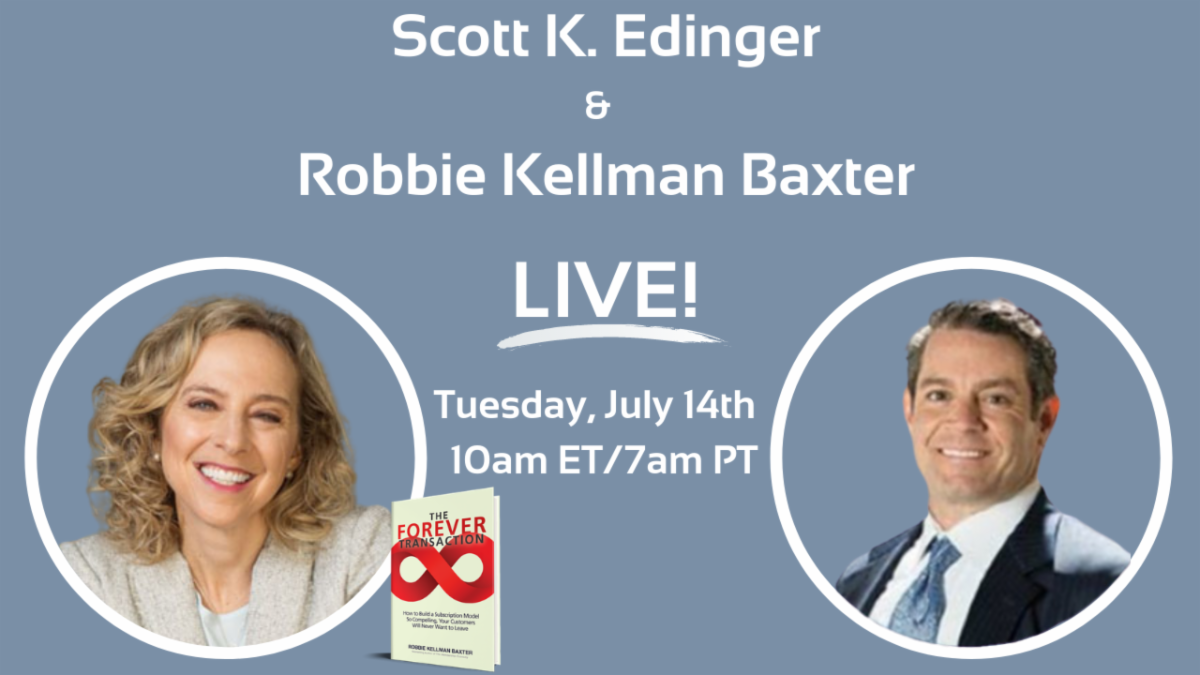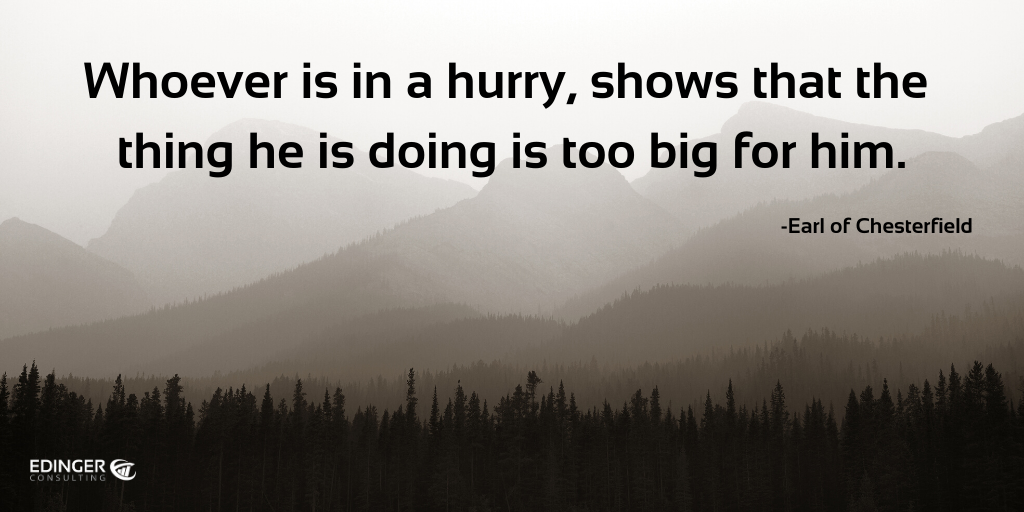
July 9, 2020
LinkedIn Live:
This week I had a great conversation with a good friend and colleague, Robbie Kellman Baxter, on her LinkedIn Live. In fact, we had so many ideas that weren’t covered, we’re going to do it again! Join me and Robbie on my next LinkedIn Live on Tuesday, July 14th at 10 am ET, at which time we will discuss strategies for aligning your sales organization with new approaches and models for driving revenue and profitability. Some of these ideas were highlighted in my latest HBR article, How to Convince Your Sales Team to Adopt a Subscription Model. Robbie is the author of The Forever Transaction, and has tremendous insights on building subscription models for all industries.

Buzzwords Vital to Your Company:
The risk with buzzwords is that while we think we know what they mean, there are often multiple or worse, conflicting definitions for them. I was in a meeting a few years ago when the term “platform” was used 5 or 6 different ways. It wasn’t until I made this observation that the clients in the meeting agreed that there was far too much ambiguity in the way they were using the term.
Two vital words to consider in business that are too often undefined are Vision and Strategy. Both terms are used enough to be considered buzzwords, but they have great power when people and teams share the same understanding of what they are. They are two of the most essential elements of long-term business success. Here are a couple of straightforward definitions.
- “Vision” – Where your business is heading. A picture of the exact future you wish your business to attain.
- “Strategy” – What your business will do in order to realize that vision. Any clear strategy includes your primary objectives, advantages or differentiation, and an ideal client profile.
As aside, strategy will always deal with the “What.” What is the objective, what is the problem to be addressed, what is the project that needs to be completed? Tactics or execution will always address the “How” of things to be done. As leaders keep your focus on the What and Where, and let your teams identify the best of “How” to do things.
So, how do you effectively, weave these two together?
Three key things to keep in mind:
- Focus on goal congruency. Most companies are pursuing at least a few objectives that aren’t well aligned with the company strategy. That’s a waste of time, money, and organizational energy. Whether you are an entrepreneur or the CEO of a Fortune 500 Company, you must keep your eye on the company’s vision, as well as executing the necessary strategic steps to achieve it. As with any great achievement, realizing a company’s vision will not happen all at once. Remember, the world’s most impressive cathedrals were built one stone at a time; the trick is to know when and where to lay each stone. As you look at your proverbial cathedral, develop a roadmap or building plan made up of strategic and achievable goals that you know you can complete with efficacy. Each goal should lead you to another, and another, as you work toward your vision with confidence, clarity and consistency.
Invest in the right tools and talent. Have you ever chosen the wrong utensil for a dish? No matter how brilliantly designed the utensil is, it’s amazing how much less efficient it is to eat salad with a spoon. The right tools for the job are paramount. Perhaps even more critical than the tools, is the right talent - the best human capital for the task at hand. A great leader has the ability to identify, recruit and retain the best talent for a specific job. Strategy and actionable goals are only as effective as the team and tools responsible for executing them. - Measure successes, adjust weaknesses. Your strategy is a working document, not an artifact of last year’s planning sessions. Life is unpredictable (if we hadn’t embraced that fact before, 2020 has certainly pushed us to do so). Therefore, even the best approach needs to be revisited and tweaked along the way. Too often, leaders set their vision and put a strategy in place and go on autopilot, failing to account for changing internal and external forces or looking for opportunities to grow as a team. At each project mile marker do a quick assessment. What worked? What didn’t? What do you need to change moving forward? Take time to celebrate the small wins and learn from the times you fell short.
Are there buzzwords you use in your company that have multiple meanings? Put in the effort to clarify what they are and align your teams with understanding. The primary weakness in execution is undoubtedly a lack of clarity and the misunderstandings that always accompany it.
Question to Ponder:
Is there something out of your comfort zone that you’ve always wanted to try? A new hobby or skill to develop? It’s officially summer and we are still spending a lot of time at home, which means it’s a great time to learn something new. What’s on your list?
Quotable:


